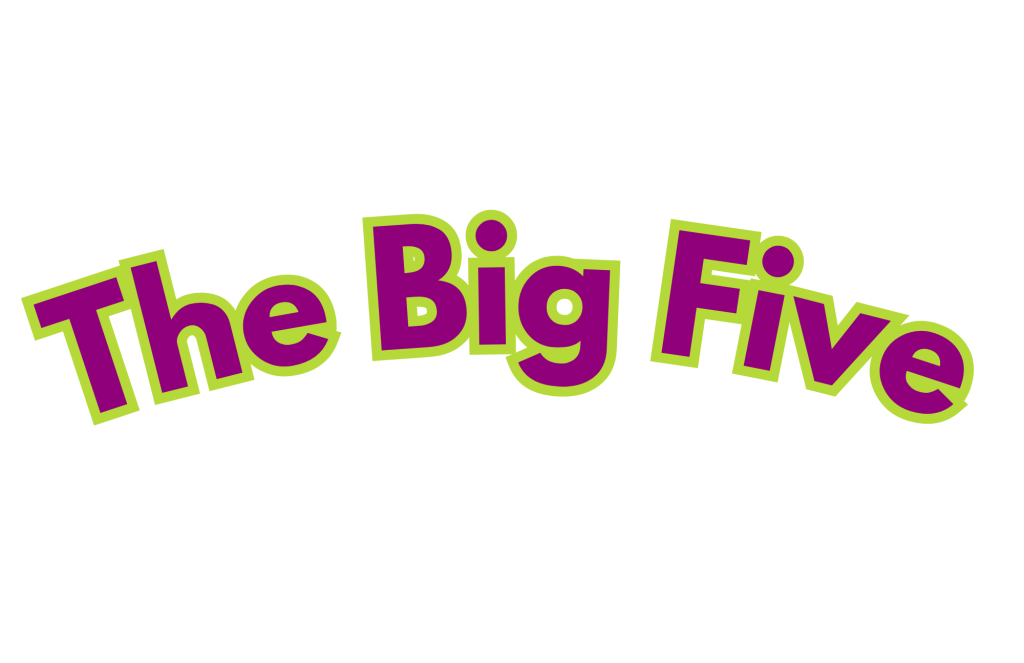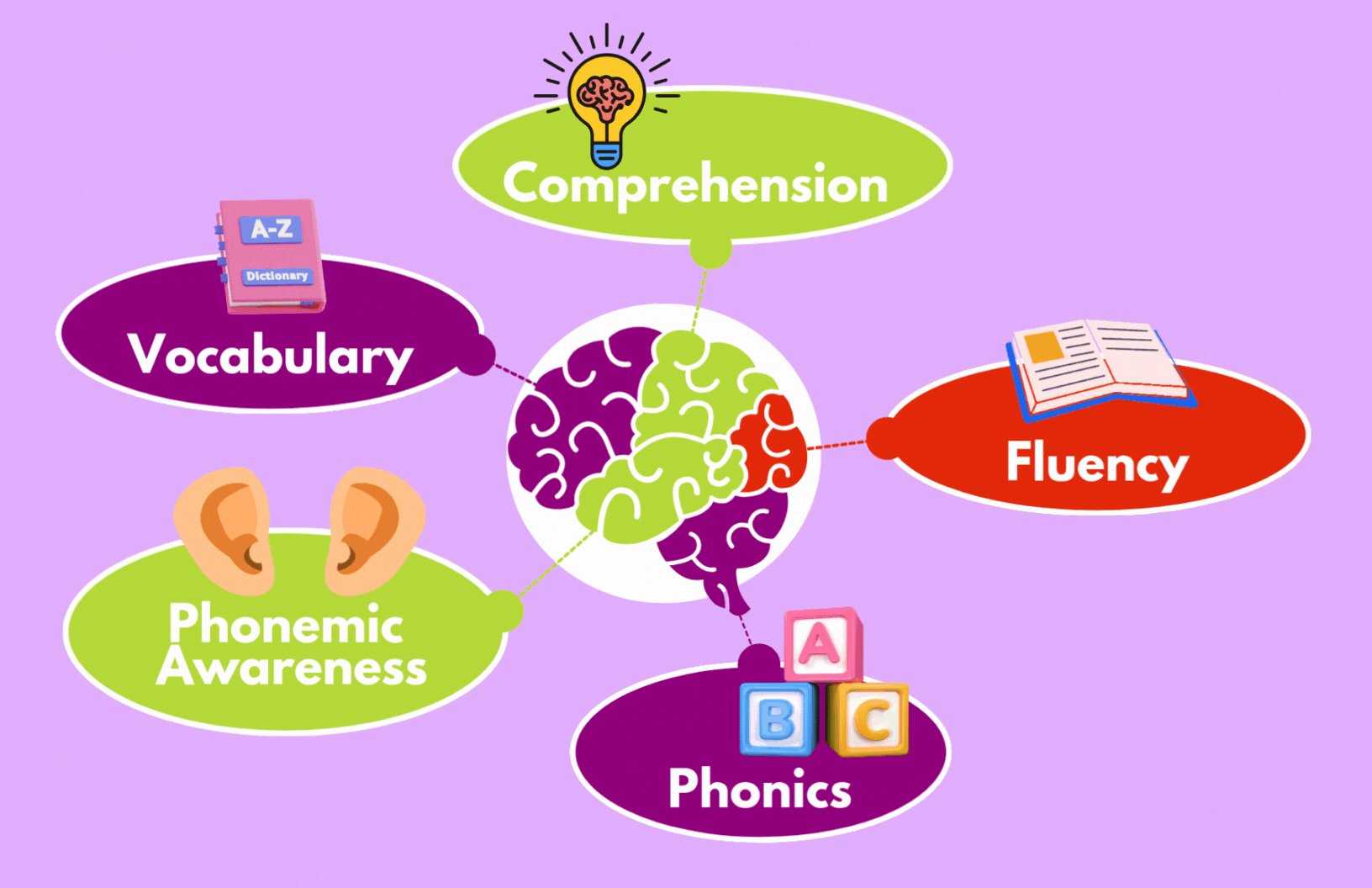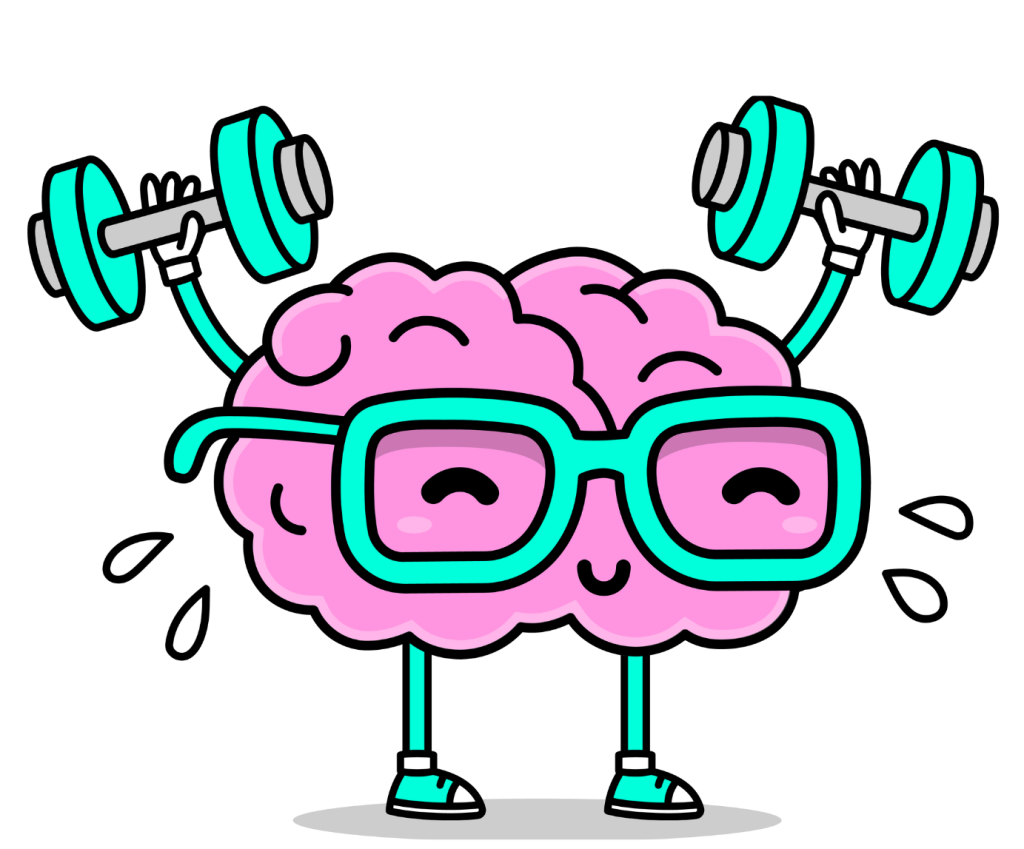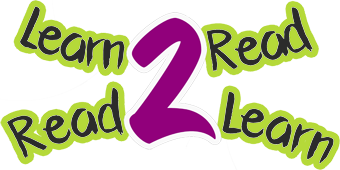
What Is the Science of Reading?

The Science of Reading is based on decades of research in education, psychology, linguistics, and neuroscience. It explains how children learn to read and identifies methods that help them succeed.
One key insight is that babies’ brains are exceptionally receptive to language from birth until about age five or six. By age five, approximately 90% of brain development is complete. During this “critical window,” children can more easily absorb language, forming a strong foundation for reading.
The Science of Reading also highlights five key components of reading development, often called the “Big Five”:


1. Phonemic Awareness
The ability to hear and manipulate individual sounds in words (e.g., hearing the “c” sound in “cat”).
How to Build It: Play games like clapping syllables, singing rhymes, and identifying rhyming words.
2. Phonics
Connecting sounds to letters and understanding how they form words.
How to Build It: Introduce letters through playful activities, like pointing out the “A” on a cereal box or the “B” on a book cover.
3. Fluency
Reading with accuracy, speed, and expression.
How to Build It: Start with listening—read aloud to your child, modeling how stories “flow.”
4. Vocabulary
A growing word bank makes recognizing words in print easier.
How to Build It: Use everyday conversations, storytelling, and diverse books to introduce new words.
5. Comprehension
True reading success means understanding what’s read.
How to Build It: Discuss pictures in books, ask questions like “What do you think will happen next?”, and encourage retelling stories.
Why Starting Early Matters

Brain Plasticity:
Children’s brains are wired to absorb language naturally in their early years. This ability narrows as they grow older.

Foundational Skills:
Speaking, singing, and reading aloud during the early years build neural pathways that make later reading and writing easier.

Preventing Learning Gaps:
Early literacy skills help children enter school confident and prepared, reducing the risk of future struggles.
Best Practices During the First Five Years
1. Talk, Read, and Play:
Speak to your child in complete sentences, read picture books aloud, and engage in playful conversations.
2. Interactive Reading:
Make storytime fun by pausing to ask questions or discussing illustrations.
3. Phonemic Games:
Play simple games like “I spy something that starts with the ‘b’ sound” to build phonemic awareness.
4. Sing Songs and Rhymes:
These emphasize sounds in words, helping children recognize patterns.
5. Provide Access to Books:
Keep books within reach so children can explore them independently.
6. Label Your Environment:
Use sticky notes to label familiar objects (e.g., “door,” “chair”) or create a family word wall.
7. Keep It Fun:
Choose engaging books, read with expression, and celebrate small wins like recognizing a letter or sounding out a word.
8. Read Jovially:
Show excitement when reading in front of your child to inspire their love for language.
Conclusion and Next Steps

Starting early with language-rich activities is the best way to harness your child’s innate capacity for learning. By focusing on the basics—talking, reading aloud, playing with sounds, labeling the environment, and making it enjoyable—you’re applying the core principles of the Science of Reading.
This approach builds a solid foundation for structured literacy lessons later, ensuring your child enters school confident and ready to succeed.
[Visit our Wordbank Page] for more tips, activities, and resources to help your child develop a lifelong love of reading.

